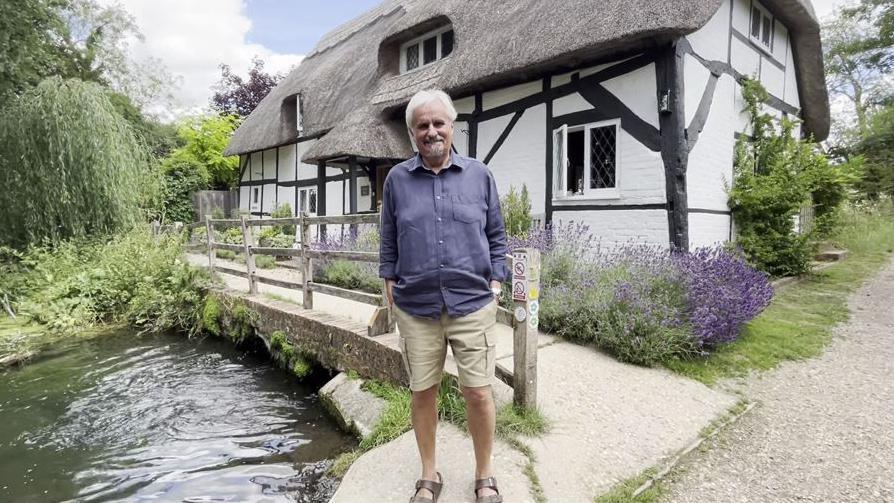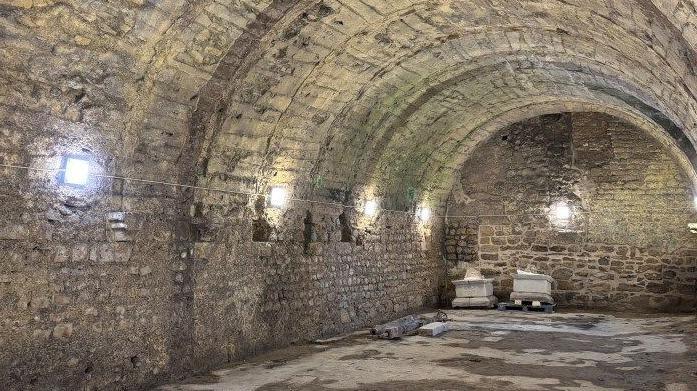'Joy' of living in a 13th Century former mill

Clive Earl says he feels more like a "custodian" of the building than the owner
- Published
On the River Alre in Alresford sits Fulling Mill, a picturesque thatch cottage, considered to be one of the oldest continuously occupied buildings in England.
The mill was built in the 13th Century to tighten and shrink cloth into a closely-woven fabric - a process known as fulling.
It fell into disuse in the 19th Century when the cloth industry established large mills to carry out an increasingly mechanised process.
Today it is a private house after being saved from dereliction in 1951, when it was renovated and the garden laid out.
Radio Solent's Lucy Ambache took a glimpse inside to find out how its current owner is embracing the building's history.
The space where the old machinery for the mill once stood is now a kitchen, with triple-glazed glass in the floor revealing fast-flowing water below that at one time powered the wheels for the mill.
"In the old days, there were probably two large wheels," says owner Clive Earl.
"The river is split into two streams and there would have been two large wheels, lifting hammers and letting them drop into troughs that would have been within this machinery space, troughs that would contain the woollen cloth that needed to be washed and fulled."
Fulling Mill: Life in a 13th century cottage
Fulling involved pounding the cloth "to make all the microfibers grip together so you got a much more powerful stronger woollen cloth that wasn't just bits of thread hanging together", he explains.
"The miller would have cloth brought to him from local cottage weavers, it would be put in the troughs, mixed with probably Fuller's earth or maybe chalk, and the cloth would be beaten in the clean water from the river, to clean it and take all the oils out to make a fine woollen cloth."
The cloth would then be hung on frames outside to dry.
"Those frames are called tenter frames," says Clive. "The cloth would be hung on hooks on the frames and stretched on tenterhooks and that's where we get the phrase 'being on tenterhooks' from."
Clive says the mill was built in 1210 and occupied from then through to the present day, "which makes it one of the longest continually occupied buildings probably in England".
"A little bit of maintenance is required on a reasonably regular basis but it's just such a joy to live here," he says.
"You don't necessarily feel like the owner you feel like a custodian, you know you're here for a while to keep the house up and running and it'll pass on to someone else afterwards."
Get in touch
Do you have a story BBC Hampshire & Isle of Wight should cover?
You can follow BBC Hampshire & Isle of Wight on Facebook, external, X (Twitter), external, or Instagram, external.
See also
- Published21 June

- Published14 June
